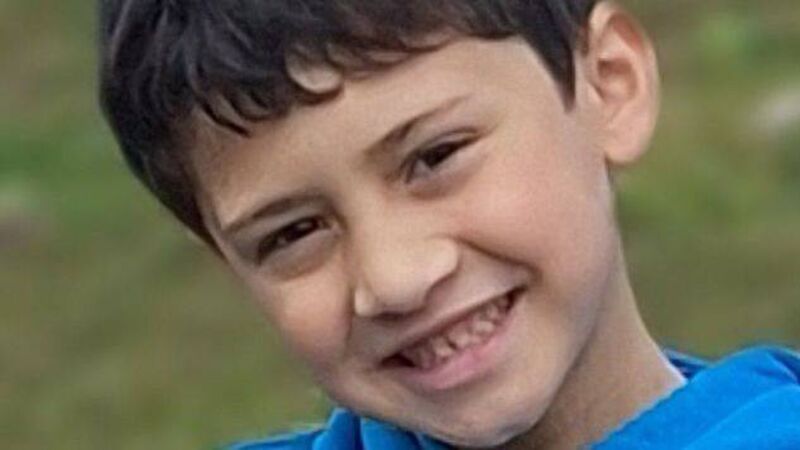‘I can’t take it anymore,’ said six-year-old before he died in CUH

Logan Murphy from Macroom died at CUH in August 2024 due to viral myocarditis — inflammation of the heart muscle due to a virus. File picture
A six-year-old child said “I can’t take it anymore” shortly before he died in Cork University Hospital less than 24 hours after he was admitted with abdominal pain.
Logan Murphy’s parents watched him deteriorate while repeatedly asking for help.
He had suffered a rare viral infection which was attacking his heart, but was initially misdiagnosed as having suspected appendicitis.
He prayed ‘please make me better and please protect my family’ in the hours before his death on August 13, 2024, in CUH.
“I could see my son deteriorating before my eyes,” his mother, Lei Murphy, told Cork Coroner’s Court on Thursday.
However, she and her husband Patrick felt staff at CUH did little to help their son — who was crying in pain and told them he felt like he could not breathe with chest pain.

Despite multiple requests to see a doctor, no hospital staff were seemingly paying proper attention to her son’s case, Ms Murphy said.
She then saw him lying face down on the bed and screamed: “He’s dead.”
Medics tried for one hour to resuscitate the child, but Logan, from Macroom, Co Cork, was later pronounced dead.
“I always tried to keep my son safe as a mother,” Ms Murphy said.
“Why did a healthy, young boy die after less than 24 hours in the hospital’s care?”
Her son had come to her room complaining of tummy pain before vomiting after 1am on August 12, 2024.
His GP referred him as an emergency to CUH later that day.
He waited five hours at CUH before seeing a doctor at 11pm that night.
At 8am, he was seen by a consultant surgeon who ordered an ultrasound that was performed after 9am.
However, the child died before 3pm that very afternoon.
Pathologist Margot Bolster told Cork Coroner’s Court that the cause was sudden cardiac death due to viral myocarditis — inflammation of the heart muscle due to a virus.
When she investigated the heart under a microscope, she found inflamed tissue and some dead heart tissue.
However, it took this level of inspection to find the cause of death as no cause was immediately obvious, Dr Bolster said. She added that myocarditis can be very difficult to diagnose as it has a wide spectrum of clinical manifestations.
Esther Early, barrister for the family, said that Logan had symptoms of myocarditis — including chest pain, elevated heart rate, and fatigue.
However, this had not been investigated or diagnosed at CUH.
Appendicitis was initially investigated instead because Logan had tummy pain and vomiting.
Dr Finn Coulter was on call as the emergency medical consultant that night in the emergency department.
Although he did not see Logan, after reviewing the notes and speaking to the medics who did see Logan, he said that his presentation would not suggest viral myocarditis.
His heart sounded normal when checked in the emergency department, with no murmur, normal sound, and rhythm.
The speed of the onset of the viral myocarditis and the extent of its damage was “shocking”, Dr Coulter said.
However, that was sometimes seen with this “incredibly rare” disease, he said. If a viral infection had been diagnosed, treatment would have been similar to what he had been given — with paracetamol, ibuprofen, anti-nausea medication, and IV fluids, Dr Coulter said.
Ahmed Haidaran, a consultant general surgeon in CUH, said myocarditis was so rare it affected just 15 people per 1m.
He said that he was “deeply saddened and shocked” at the child’s death.
When he saw Logan at 8am on the morning of his death, the child was able to give him his own medical history very competently. Logan said pain in his abdomen was at a scale of nine out of 10.
Mr Haidaran ordered an ultrasound to help diagnose any surgical causes of his pain, such as appendicitis or a twisted bowel, although a viral infection — which would generally be viewed as less acute — was also raised as a possibility.
The ultrasound was performed at 9.45am, but Mr Haidaran — who had requested it as an emergency — was not sent the report until 2pm. The results were inconclusive, so he ordered a CT scan.
Although a pediatric review of the child had been recommended that morning, it never took place.
Barrister Richard Keane, for the family, urged the coroner for a verdict of medical misadventure coupled with a narrative verdict — indicating the need for an urgent review in the hospital regarding policy to recognise and act on parental concerns.
Coroner Philip Comyn said that he did not feel the verdict of medical misadventure was possible unless there was a positive action which led to someone’s unintended death.
In the event of inaction — despite that verdict being given for inaction in the case of Aoife Johnston, who died of sepsis in Limerick — he did not feel inaction could constitute medical misadventure.
Logan had died of natural causes, he said.
He extended his sympathy to Logan’s family on their pain and suffering in what was a “difficult and tragic case”.













